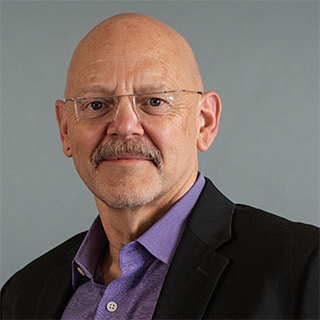
Charles Edwin Chase
AIA
Principal
After World War I, many communities in the United States constructed veterans memorial buildings to honor those who fought for their country and to provide a gathering place for veterans organizations. The “War to End All Wars” proved to be a misnomer, and these buildings have continued to be active, integral parts of public life, often offering space for community activities as well. However, many of these structures, built in the 1920s and 1930s with the help of state and federal funds, are showing their age and lack the capacity to welcome troops returning from recent wars. For veterans organizations, it’s a challenge to find the financial resources required to rehabilitate, expand, or replace these facilities—especially given the difficult economy of the last several years.
This was the problem facing veterans of Danville, California, a San Francisco Bay Area suburb in the San Ramon Valley. The two-story veterans memorial building at the corner of Hartz Avenue and East Prospect Avenue in the heart of downtown had been constructed in 1925. To accommodate military personnel returning from the war in Iraq and Afghanistan, members of local veterans organizations initially contemplated selling the facility and finding another site on which to build a new, larger, and more modern one.
The desire to expand reverberated outside the veteran community as well. Local individuals and groups relied on being able to rent spaces in the building for their own events, and the building has long served as a base for the municipality to provide services to seniors, for which there was also growing demand.
The solution was to team up. In 2007, the board of trustees for the veterans building entered into a partnership with the municipality and had the building’s title transferred to the Town of Danville.
We were initially hired to assess the property for its historic value. We determined that the facility did have historical significance, given its importance to the community. We worked with a steering committee made up of representatives of the veterans, the town council, senior services staff, and Danville’s historic resource committee. The steering committee ultimately decided not to replace the building, but to go the renovation route instead, constructing an addition that would respond sensitively to the existing structure.
The renovation and addition would expand the facility from 6,300 to 13,000 square feet. We placed the addition at the rear of the property, tearing down a much smaller, deficient community hall that had been constructed not long after the main building. It had undergone so many alterations over the years that it no longer retained historic value. Overall, we removed about two-thirds of the original square footage of the facility, preserving the historic core of the building and its prominent public facade.
The seniors and the veterans each needed their own front door so that both groups could hold events at the same time. We renovated the existing two-story building, which fronts onto Hartz Avenue, for the veterans to use, enabling the original entrance to remain the primary entry for veterans. Giving the new senior center its own one-story wing at the opposite end of the site allowed it to have a distinct identity and a dedicated entrance on East Prospect Avenue. In between the two volumes lies the new community hall, with an interior colonnade along East Prospect. The senior wing extends out toward the street to form one of the three sides of a linear outdoor plaza. The colonnade’s glass doors allow natural light to illuminate the community hall and, when opened, connect the building to the public realm. The community hall seats up to 350 people and can be subdivided into three separate spaces to allow multiple events to take place simultaneously.
The senior center wing includes staff offices, a meeting room, an art room, a conference room, and storage areas. The original structure’s second floor houses the spaces for veterans, including a meeting room, offices, a military library, conference rooms, a board room, social spaces, and a resource center for returning veterans.
Fitting all of these program elements into the limited square footage proved a challenge. To make room, we placed mechanical equipment on the roof above the senior center, concealed from view, in order to free up as much room as possible for public functions. The addition also includes an elevator, a crucial amenity that the original building lacked.
The municipality contributed $6 million toward the $8.1 million project, with the veterans raising funds for the rest. The expanded building reopened in 2012, providing veterans with an enhanced facility, allowing the Town of Danville to expand its programs for seniors, and offering the community multiple rental spaces for weddings and other events. The historic building’s architecture may be modest, but the structure has long been an essential player in Danville’s public life, a focal point during parades and other town-wide events. Joining forces was the key to preserving this important piece of local history and helping it better serve the needs of the present and the future.

